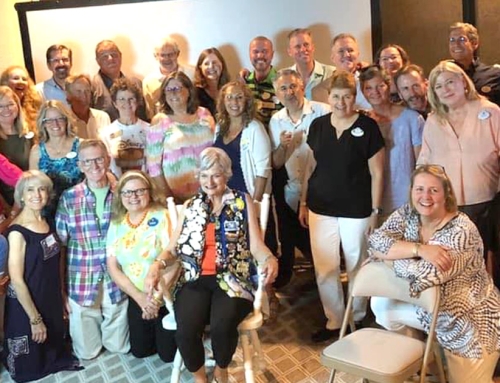
By Jake Poore
You never get a second chance to make a first impression.
Think back: when was your last encounter with customer service personnel? What do you remember about the experience? How friendly was their facial expression, voice, or body posture?
Did you feel like you were a person to them, or just the next number in a long and busy line?
At ILS, we focus on the personal. Our practice is to make a human connection with each person we meet, and this is what we advise our healthcare clients to do. Our mantra is, human in, human out,”—a reminder that from start to finish, relationships come before business. With regard to “human in,” we know just how important it is to make a positive first impression. Whether an encounter is face-to-face, by email, or over the phone, customers should feel cared for and valued from the very beginning of their experience.
Memory examiner Elizabeth Loftus has proven that the first and last items in a list are by far the most easily remembered. In customer service, the same principle holds true: the first and last moments—what we call warm welcomes and fond farewells—are what a customer will hold in their memory after an interaction.
Further research suggests we form impressions instantly and involuntarily. In fact, it only takes about 100 Milliseconds for our mind to form an impression of someone. Psychologist and NYU professor James Uleman researched how people form first impressions, and how they affect our social conclusions about others. He claims it’s something we can’t help, saying,
“People make social inferences without intentions, awareness, or effort.”
First impressions are spontaneous, and lasting. They set the tone for the rest of the encounter. Whether you’re greeting someone in person or virtually, every encounter should start with a warm welcome.
Roll out the Welcome Mat
Uleman’s research also shows that we form impressions about people based on two main things: their faces and their behaviors.
That’s why a warm welcome should always start with eye contact, and a smile. Your facial expressions should show that you’re not only listening to the person, but that you are appreciating what he/she has to say. Remember, in only 100 milliseconds, your guest should see you as someone interested and caring. Your behaviors should follow suit—creating an environment of hospitality in your actions are of the utmost importance. Greet your guests with courteous words and a personal touch—“how are you today?” goes a lot farther than, “last name, please.”
It’s easy to accept that gracious welcomes are important for hotels or restaurants, but what do they have to do with the efficient running of a hospital, doctor’s office, or clinic?
Take a second to put yourself in the patient’s shoes. Think about these types of environments, and what could be new or fearful about them. Waiting areas, operating rooms, and post operation care units can be unfamiliar spaces er assigns volunteers to the welcome desk where they not only inform visitors of a patient’s room number, but also write it down on a pretty piece of note paper. Served up with a heart-generated smile, it sets the tone for the whole visit and is a wonderful public relations effort. A sincere smile and helpful attitude, eye contact and other positive body language, and an appreciation for cultural diversity and physical disability, all communicate volumes to a frightened patient while creating a warm, calming environment.
Virtual Welcomes
Warm welcomes often begin before a person even walks through the door. In today’s world, the telephone or email is often a healthcare customer’s first point of contact with your service. Virtual warm welcomes are just as important as face-to-face.
The first step of a virtual warm welcome is making sure the person is attended to as quickly and easily as possible. No one enjoys sitting on hold for hours. One nurse manager we know on a busy surgical floor makes it a habit to telephone her unit from home every week or so. If the phone rings off the hook (five rings is the acceptable standard for the unit), or she gets placed on the eternal hold button, she addresses the problem accordingly. A customer should see you as available and easy to reach. Paying attention to phone lines makes patients feel appreciated.
The second step is remembering the to focus on the human. Just because healthcare has become a sea of insurance red tape with a “take a number” mentality, doesn’t mean we should be so business-like that we become detached. Even if you don’t know the person, you can open emails with “Hope you had a nice weekend” or “How is the weather there?” Take a look at the last five emails you sent. Did you say good morning, hello, or how are you doing, before you went straight to your need? We might think of these remarks as boring, small talk. But to our respected peers and patients, words like “how are you” are priceless. Starting with a human connection is vital in reducing some of the anxiety a patient of family member is experiencing. It shows you’re human, and that you care.
The same thing goes with the telephone. One of the most overlooked areas for creating a warm welcome in your unit is the manner in which the telephone is answered. How does your phone get answered? With a straight-to-business remark, such as “NRH, what department?” How about trying, “National Rehabilitation Hospital, how may I assist you” instead? A warm hello and genuine willingness to answer a question or direct a call is a game changer. It lets the person on the other end of the line feel welcomed instead of tolerated.
Human-Business-Human® = Human in, Human Out
Warm welcomes are a patient’s first impression of your healthcare unit. They are the precursor for the rest of the experience, and they are what patients remember long after they’ve walked out of the door. It’s important that patients and their families feel respected, appreciated, and cared for from their very first contact—whether it’s an email, a phone call, or a face-to-face encounter.
Healthcare patients often enter a new and potentially frightening environment. They come in searching for a friendly face, and someone to assist with their concerns. They are human, and they want to know the person assisting them is human, too. Warm welcomes should be personal, and truly from the heart.
First impressions. You only get one chance. Smile. Sympathize. Connect. Human in, human out using the Human-Business-Human® method—that’s the type of first impression we want to make.





